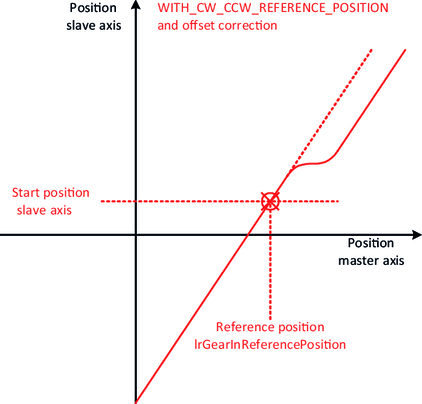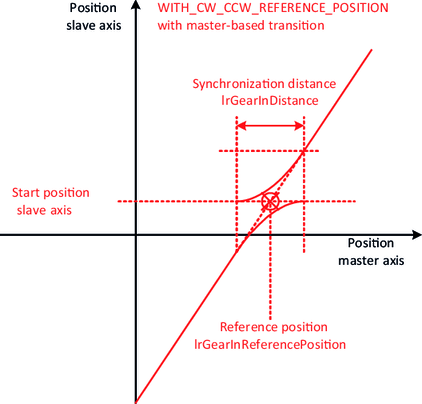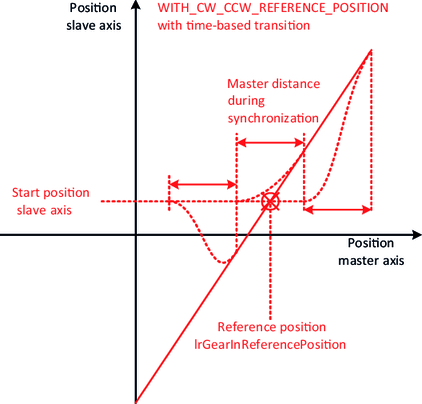Synchronization mechanism with reference position
In the case of the synchronization mechanism with a reference position, the "attachment point" of the lines results from the current position of the slave axis and the configured reference position IrGearInReferencePosition of the master axis.

An important characteristic of this synchronization mechanism is that the use of a transition does not change this "attachment point." A master-based transition follows exactly this line with the configured synchronization distance lrGearInDistance.

A time-based transition also follows this line, but the resulting transition depends on the boundary conditions. Depending on the state of the master axis (position, speed, acceleration) and the configured synchronization time lrGearInTime, the slave axis can reverse or also run oversynchronously during synchronization. The following diagram shows three different scenarios in which the master axis is moving at a constant speed.

In the case of the synchronization mechanism with a reference position, the slave axis should be synchronized with reference to the defined reference position of the master axis. The synchronization condition is therefore not met immediately in most cases when there is a rising edge on the xStart start signal. The eGearingState state therefore switches from "STOPPED" (0) to "WAITING_FOR_STARTPOSITION" (1) during synchronization.
During synchronization, the following applies in particular:
- If no transition is configured, synchronization will occur when the master axis crosses the configured reference position lrGearInReferencePosition in the configured direction. The eGearingState state switches in this moment from "WAITING_FOR_STARTPOSITION" (1) to "ACTIVE" (3).
- If a master-based transition is configured, a trigger position is calculated that is positioned half a synchronization distance lrGearInDistance before the configured reference position lrGearInReferencePosition. Synchronization begins when the master axis crosses the calculated trigger position in the configured direction. The eGearingState state switches in this moment from "WAITING_FOR_STARTPOSITION" (1) to "GEAR_IN" (2).
- If a time-based transition is configured, synchronization begins immediately when the master axis moves in the configured direction. The eGearingState state then switches immediately from "STOPPED" (0) to "GEAR_IN" (2).
